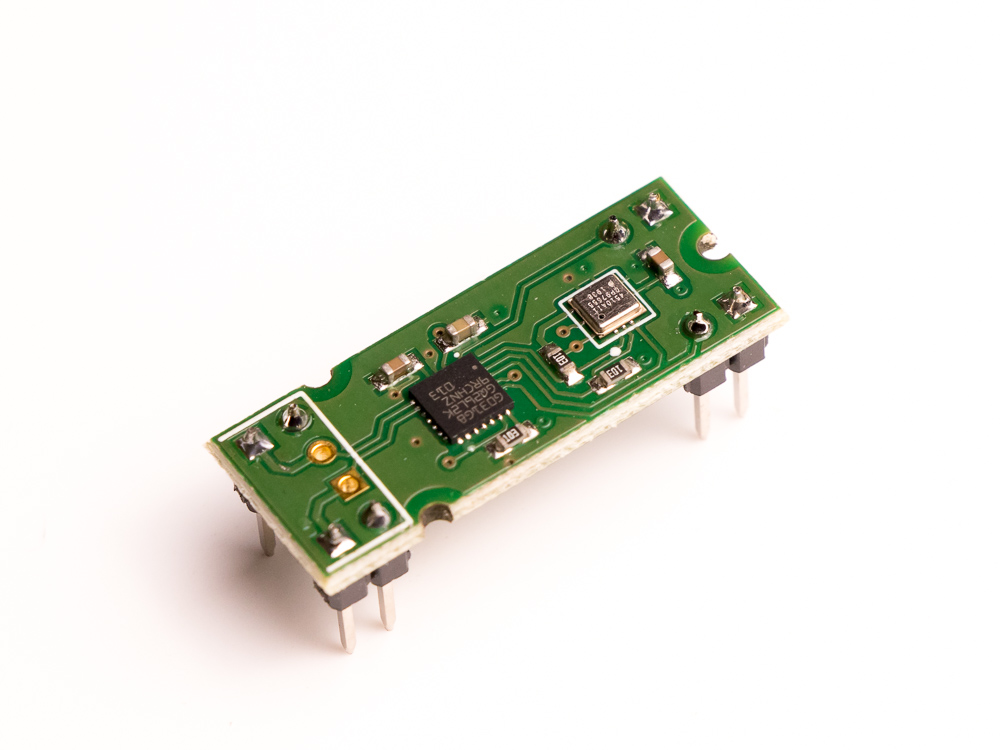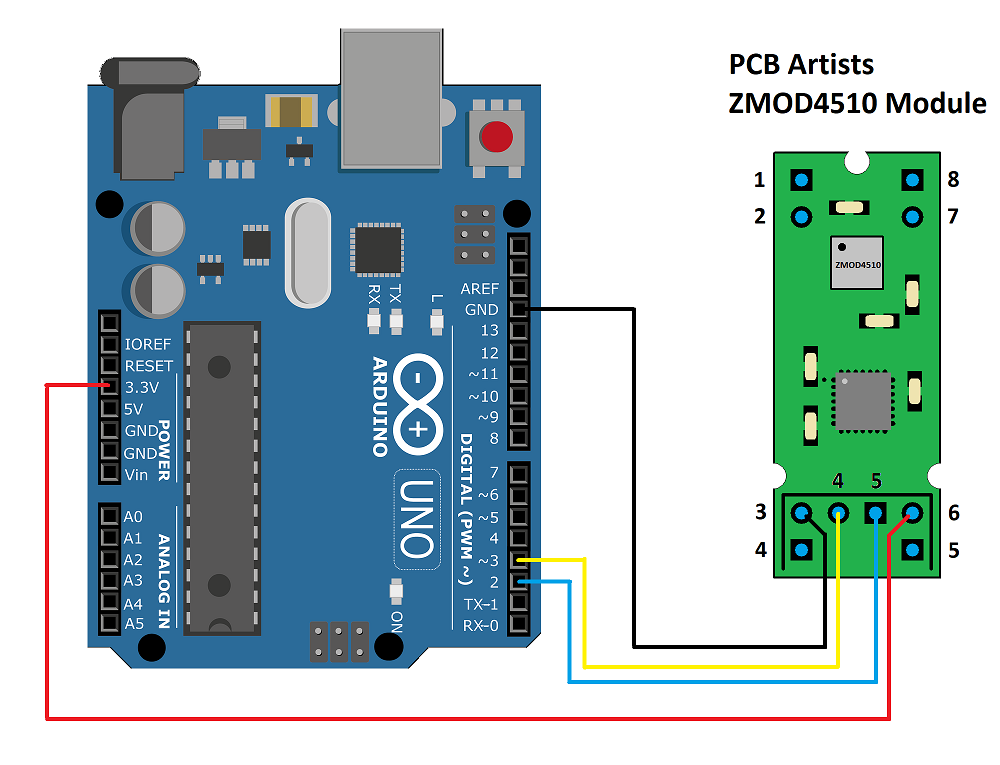
Interfacing ZMOD4510 Module with Arduino
Arduino, just like all other embedded platforms, comes with a hardware UART interface. Arduino libraries for Arduino boards also allow for using any pin as software emulated serial port. In this example, we will use a software serial port for interfacing the module with Arduino UNO.
The ZMOD4510 module requires at least 4 pins to be connected for proper functioning:
- Module Pin 6: 3.3V
- Module Pin 5: RxD
- Module Pin 4: TxD
- Module Pin 3: GND
The connection diagram for connecting ZMOD4510 to Arduino is simple and shown below. You can connect RxD and TxD pins of the module to any digital IO of the Arduino if you are using the Software serial library (see references below).

The 3.3V output of the Arduino is capable of supplying enough current for the ZMOD4510 module to operate. The module consumes less than 10mA (peak) when it is fully active and making pollution level measurements.
5V Arduino and 3.3V ZMOD4510 Module
If you have an MCU that does not recognize 3.3V at the input as logic high and needs a higher voltage to read as logic “high”, you will need to use a logic level converter chip such as the TXS0102 in between for proper interfacing.
One such logic level converter board is:
SparkFun Logic Level Converter
Please fill in the Subscription Form in the sidebar so we can keep you updated with our latest articles.
We only mail you less than 2 times a month.
Change Log
- Initial Release: 22 March 2021
References
- Reference 1: PCB Artists ZMOD4510 Datasheet
- Reference 2: Arduino software serial library
- Reference 3: ATmega8 Datasheet